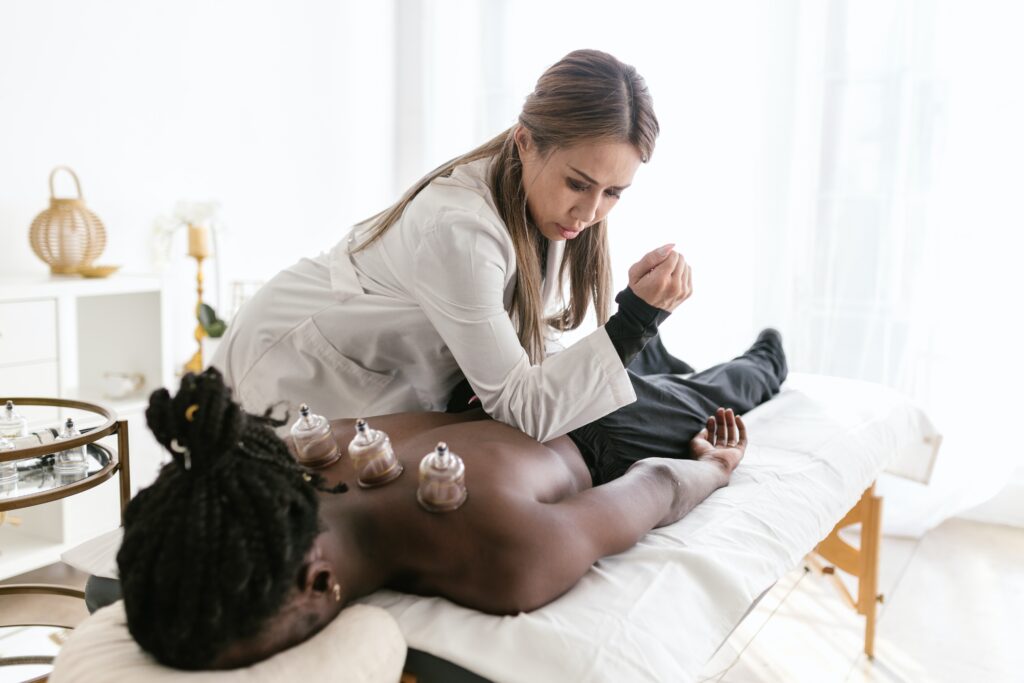Acupuncture Treatment Techniques
Exploring Acupuncture and Traditional Chinese Medicine methods
Acupuncture is one of the oldest healing practices, and has stood the test of time, with roots deeply embedded in Traditional Chinese Medicine (TCM). In this article, we’ll discuss acupuncture treatment options, exploring not only the well-known needling but also the practices of gua sha, cupping, acupressure, and the overarching principles of TCM.

Registered Acupuncturists are trained in TCM manual therapy techniques like cupping, scraping, soft-tissue release, acupressure, shiatsu and tuina massage.
- Needling: The Artful Insertion:
Acupuncture, at its core, involves the insertion of thin needles into specific points along the body’s meridians. These meridians are channels through which the body’s vital energy, or Qi, flows. The skilled placement of needles aims to restore balance, alleviate pain, and promote overall well-being. Contrary to popular belief, acupuncture is generally painless, with patients often reporting a sense of relaxation during the session. - Gua Sha: Scraping Away Tension:
Gua sha, a technique involving the scraping of the skin with a smooth-edged tool, is a complementary therapy often used alongside acupuncture. This method aims to release stagnant energy and promote the flow of Qi, improving blood circulation. The process leaves behind characteristic red or purple marks, indicative of stagnation being released from the body. While it may look intense, gua sha is a non-invasive and effective means of reducing muscle tension and promoting healing. - Cupping: Creating Suction for Healing:
Cupping involves placing cups on the skin and creating a vacuum, typically through heat or suction. This process draws blood to the surface, promoting circulation and releasing tension. The distinctive circular marks left by cupping are not bruises but rather an indication of increased blood flow. Cupping is often employed to address pain, inflammation, and respiratory issues, offering a unique and centuries-old approach to healing. - Acupressure: Healing Touch Without Needles:
Acupressure shares its roots with acupuncture but involves applying pressure to specific acupuncture points rather than using needles. This practice can be self-administered or performed by a practitioner, making it a versatile option for those seeking the benefits of acupuncture without the use of needles. By stimulating key points, acupressure helps release tension, improve circulation, and restore balance to the body. - Traditional Chinese Medicine (TCM): Holistic Harmony:
At the heart of acupuncture lies Traditional Chinese Medicine, a comprehensive system that views the body, mind, and spirit as interconnected. TCM encompasses acupuncture, herbal medicine, dietary therapy, and exercises like Tai Chi and Qigong. The holistic approach of TCM addresses not only the symptoms but also the root causes of imbalance, seeking to restore harmony within the body.
Registered Acupuncturists use a variety of techniques
Registered Acupuncture treatment is much more diverse than its name suggests! There are many acupuncture treatment options, from the precision of needling to the soothing touch of acupressure, and the unique experiences of gua sha and cupping. Each treatment contributes something unique according to the wisdom of Traditional Chinese Medicine. Whether you’re exploring ways to get started, or looking to complement existing treatments in your wellness plan, acupuncture offers a unique approach to self-care.

